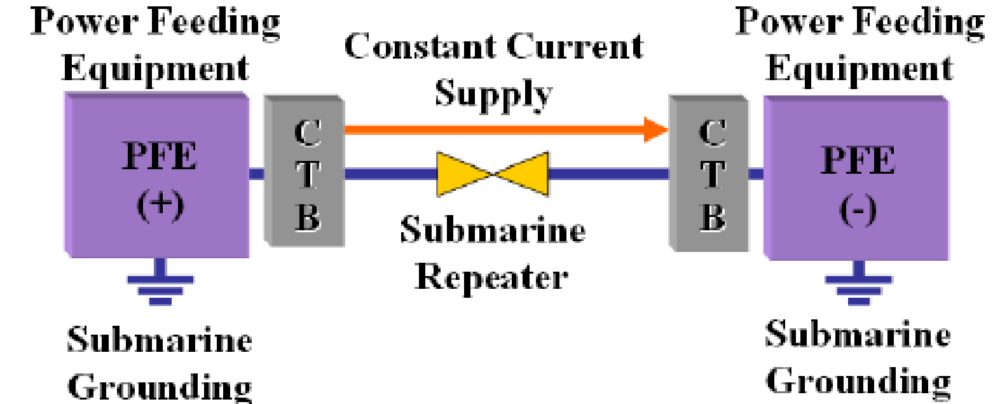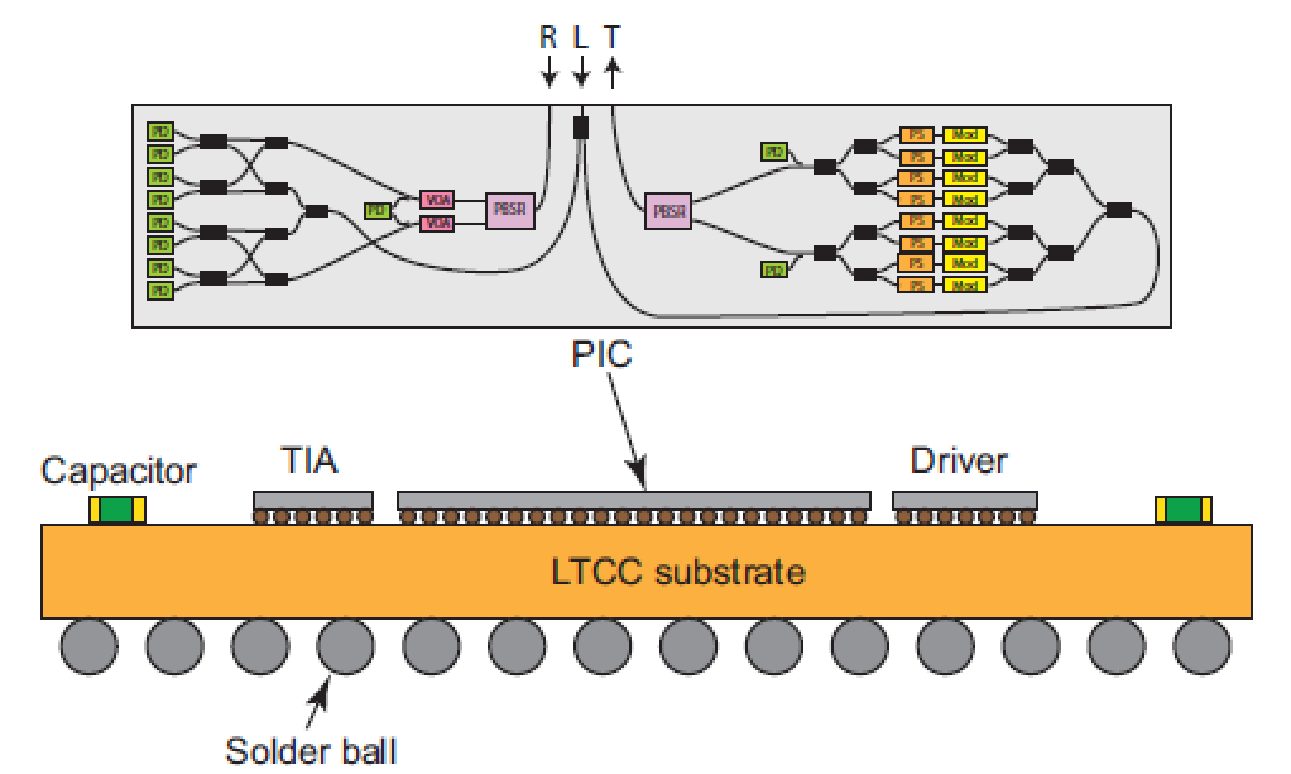
Subsea communications has become a hot topic lately as demand for data-flows across the world’s oceans continue to increase. One of the challenges is how to enable increased utilization of deployed fiber for improved network capacity. This topic as well as other challenges and the future of the global submarine industry is scheduled to be discussed at the upcoming Pacific Telecommunications Council’s annual event, PTC 2019 (January, 20–23, 2019, Honolulu, HI).
In the 1980s, the first optical fiber submarine cable, TAT-8, was installed to link the United Kingdom, France, and the United States. The TAT-8 system contained two fiber pairs, and the signal on each optical fiber was modulated at 295.6 Mbps on 1310 nm.
Fast forward 30+ years, and today, most commercial coherent transponders are able to support 100 Gbps and 150 Gbps per wavelength in C-band across the transoceanic distance1. Acacia Communications recently announced the first 400G single carrier DWDM transmission on the 6,600 km Marea submarine cable between Virginia Beach, Virginia and Bilbao, Spain2. In the field demonstration, conducted by Acacia in collaboration with Microsoft and Facebook, modulation formats greater than 4 bits/symbol were utilized to achieve a spectral efficiency of 6.41 b/s/Hz on the 6,600 km cable. This was achieved using Acacia’s 3D Shaping features that allow network operators to adapt the transmission characteristics to match filter characteristics of the network. This is especially important in a submarine network where multiple providers share the same fiber link, and are trying to optimize its capacity utilization of their assigned spectrum.
Increasing cable capacity in the future is a challenging task due to fiber nonlinearity and power limitations. Two key elements important for service providers to understand in regards to the future transponders of submarine systems deployments are:
- Power limitations of submarine systems
- Reducing cost per bit for both transponder and wet-plant
Power Limitations in Submarine Systems
Compared to terrestrial optical fiber systems, the electrical power of a submarine link is supplied from power feed equipment (PFE) on the landing stations as shown in Fig.1. Normally, the PFE has 12-15 kV feed voltage and 1 Amp current, due to many practical and safety aspects. Significant electrical power is dissipated over the copper, which has 0.75 Ohm per km, between land and the undersea optical amplifiers. To make things worse, the optical amplifier has only 1.2 percent power conversion efficiency from electrical power to the output optical power3. Thus, the next large-order cable capacity increase cannot rely solely on higher SE modulation formats, which require exponentially increasing OSNR, leading to higher EDFA output power requirements. Instead, to increase the cable capacity, future submarine systems will likely rely on power efficient (PE) modulation formats and higher spatial dimensions.

Fig.1. Power Feed Equipment (PFE) Configuration to deliver power to submarine repeaters
The fiber pairs are expected to increase from six or eight pairs currently to 24 and beyond. Higher spectral bandwidth, like full C-band or C+L, may not be power efficient since gain equalization filtering (GEF) rejects 50 percent power to achieve desired flatness for a bandwidth of 35nm.
Pilipetskii4 showed that the most power efficient modulation scheme is at ~3 bits/s/Hz SE (similar to the SE of DP-QPSK) in a case of the ideal transponder capable of operating at the Shannon limit. The PE does not increase monotonically by decreasing the SE because optical amplifiers operate in saturation, so the power of an amplifier is constant along the system and is a sum of signal and accumulated amplified spontaneous emission (ASE) noise.
Reducing Cost per Bit
Another important argument for increasing capacity in the spatial dimension is from the economic view of the submarine system. Marine costs are fixed and account for the majority of subsea operating and installation costs, while fiber is only a small percentage of the total cost. Therefore, increasing system capacity by adding more fiber is an opportunity to improve power efficiency, while reducing the overall cost per bit. Dar summarized this idea5 and also found that cost-optimized SE is slightly higher than the PE-optimized SE after considering the total cost, which includes deployment, amplifier, fiber, and transponder whose cost increases with more fiber pairs.
SE between 3 bits/s/Hz and 5 bits/s/Hz, similar to DP-8QAM, could be an attractive range for future coherent transponders in submarine applications, depending on the cost model and performance margin. Unfortunately, this requirement does not align well with many hero experiments, which still push the SE closer to the nonlinear Shannon limit by employing high-performance but expensive digital nonlinearity compensation techniques or Raman amplification.
Increasing Baud Rate for Greater Capacity
Then, what is needed from future submarine transponders if not SE improvements? Since increasing SE as previously discussed may not be the most beneficial option to reduce the cost per bit, we should look at alternative options such as high baud rate transmission.
Acacia’s AC1200 coherent module utilizes high baud rates of greater than 70Gbaud enabling transmission using lower order modulation for a given data rate, which results in improved OSNR performance and greater reach. Next generation coherent submarine transponders may likely have a baud rate greater than 100Gbaud to enable even higher capacity per wavelength. Higher baud rate is especially important when designing for low cost, as discussed in the previous section. By increasing baud rate, more capacity can be added to the cable using the same amount of hardware.
Increasing the baud rate from 32Gbaud in the current 100G coherent transponder to greater than 100Gbaud requires new analog-to-digital converters (ADC) and digital-to-analog converters (DAC) techniques and advances in mixed-signal system integration. For example, one approach is to use multiple complementary metal–oxide–semiconductor (CMOS) sub-DACs and an additional analog multiplexer (AMUX) to extend the bandwidth in the analog domain6. Another important advancement is the integration of high-speed silicon photonic integrated circuits (PICs) with CMOS driver and TIA. To date, coherent optics have been put in hermetically sealed “gold” box packaging made of high-temperature co-fired ceramics (HTCC) with wire-bonded components inside. However, this packaging is expensive, and wire bonds add inductance which limits the bandwidth.
In the future, it is likely that we will see co-packaged optics and electronics that further integrate functionality. Acacia demonstrated co-packaged optics and electronics on a ball-grid-array package (BGA) in 2017 as shown in Fig 27. Thanks to low parasitic and the reduced signal path between ASICs and PICs, this approach is particularly well suited for high baud rate applications. In addition, it is cost efficient since the fabrication can be done in a CMOS manner to enable high yield and volume.

Fig.2 Co-packaging optics and electronics by flip-chip bonding on low-temperature co-fired ceramic (LTCC) substrate
Improving Transmission Performance with Advanced Modulation Formats
The improvement of the transmission performance of transponders enables the cost reduction of wet-plant, e.g. longer repeater span and cheaper fiber, etc. Researchers are still exploring advanced modulation schemes to improve the sensitivity performance and the tolerance to both linear and nonlinear transmission effects.
There are three categories of advanced modulation formats: (1) probabilistic shaping (PS), where the in-phase and quadrature (I-Q) points are employed with non-uniform probabilities; (2) geometric shaping (GS), in which they are positioned with non-uniform spacing; and (3) multi-dimensional coded modulation. In theory, PS has about 1 dB higher sensitivity than GS. Multi-dimensional coded modulation with iterative decoding has a performance in between the two ranges. In practice, the advantage of PS depends on the implementation of distribution matching and FEC. Multi-dimensional coded modulation has the strongest tolerance to the transmission penalty because it has a larger minimum Euclidean distance. This feature can be utilized in some nonlinear compensation schemes8. Interestingly, all three methods can achieve similar hero records over long-haul transmission as shown in Fig. 3.

Fig.3. Record hero experiments over transoceanic distance with PS (blue) and GS or coded modulation (red).
Future Submarine Transponders and Moore’s Law
Finally, let’s take a look at the role of future transponders from the view of Moore’s law. A decade ago, the first 40 Gbps digital coherent transponder was developed by Nortel and had about 20 million gates and 100 million transistors based on the use of 90nm CMOS technology. Fast-forward 10 years, and Acacia’s Pico digital signal processor (DSP) has about three billion transistors using 16 nm CMOS technology, a 30 times increase of transistor number. With similar power dissipation, it achieves 1.2 Tbps, also 30 times larger throughput compared with 40Gbps. In comparison, Apple’s latest iPhone has 6.9 billion transistors9 by using 7nm CMOS technology.
The optical coherent transponder can continue to benefit from the development of the whole semiconductor industry. Future digital coherent transponders based on 7nm and 5nm CMOS technology running even more advanced DSP algorithms and achieving higher throughput at less power consumption, may reduce the cost of both transponders and wet-plant systems.
Reference
[1] V. Kamalov et al., “Evolution from 8QAM live traffic to PS 64-QAM with Neural-Network-Based Nonlinearity Compensation on 11000 km Open Subsea Cable,” in OFC, 2018, paper Th4D.5.
[2] First 400G Transmission Across 6,600km Trans-Atlantic Marea Cable Using Acacia Communications AC1200 Coherent Module
[3] T. Frisch et al., “Electrical Power, A Potential Limit to Cable Capacity,” in SubOptics, 2013, paper Tu 1C 04.
[4 ] A. Pilipetskii et al., “The Role of SDM in Future Transoceanic Transmission System,” in ECOC, 2017, paper Tu 1E.
[5]R. Dar et al, “Cost-Optimized Submarine Cables Using Massive Spatial Parallelism,” JOURNAL OF LIGHTWAVE TECHNOLOGY, VOL. 36, NO. 18, SEPTEMBER 15, 2018, PP3855-3865.
[6] H. Yamazaki et al, “160-GBd (320-Gb/s) PAM4 Transmission Using 97-GHz Bandwidth Analog Multiplexer”, IEEE PHOTONICS TECHNOLOGY LETTERS, VOL. 30, NO. 20, OCTOBER, pp1749-1751.
[7] C. Doerr et al., “Silicon Photonics Coherent Transceiver in a Ball-Grid-Array Package,” in OFC, 2017, paper Th5D.5.
[8] H. Zhang et al., “DP-16QAM Based Coded Modulation Transmission in C+L Band System at Transoceanic Distance,” in OFC, 2016, paper W1I.2.
[9] Apple A12 Bionic: 7 Billion Transistors, 5 TOPS Neural Engine & More
